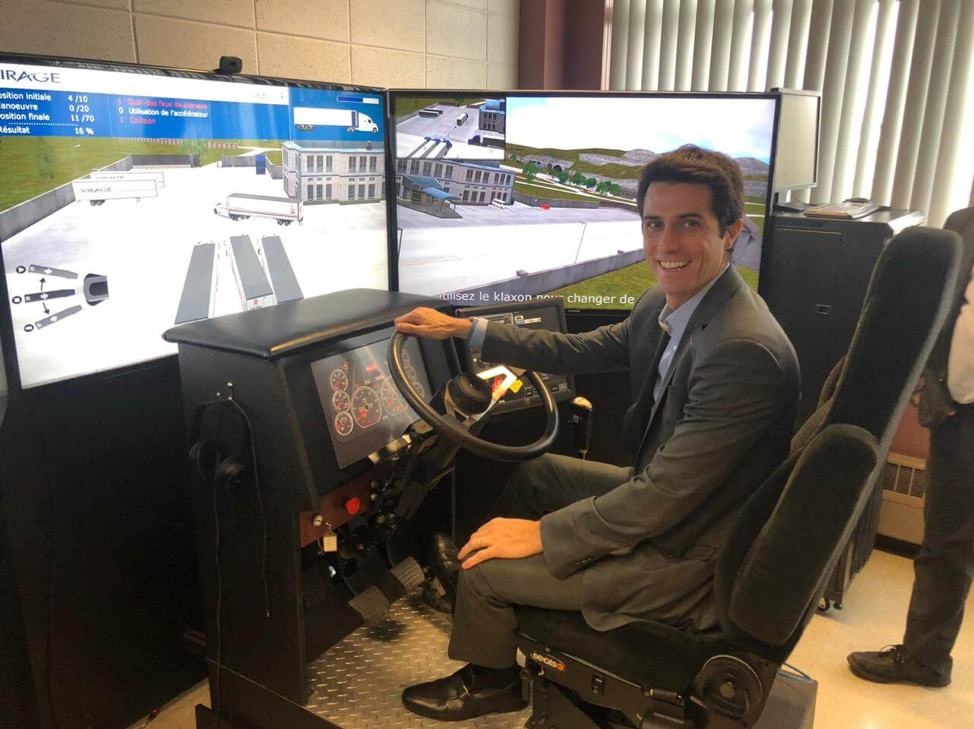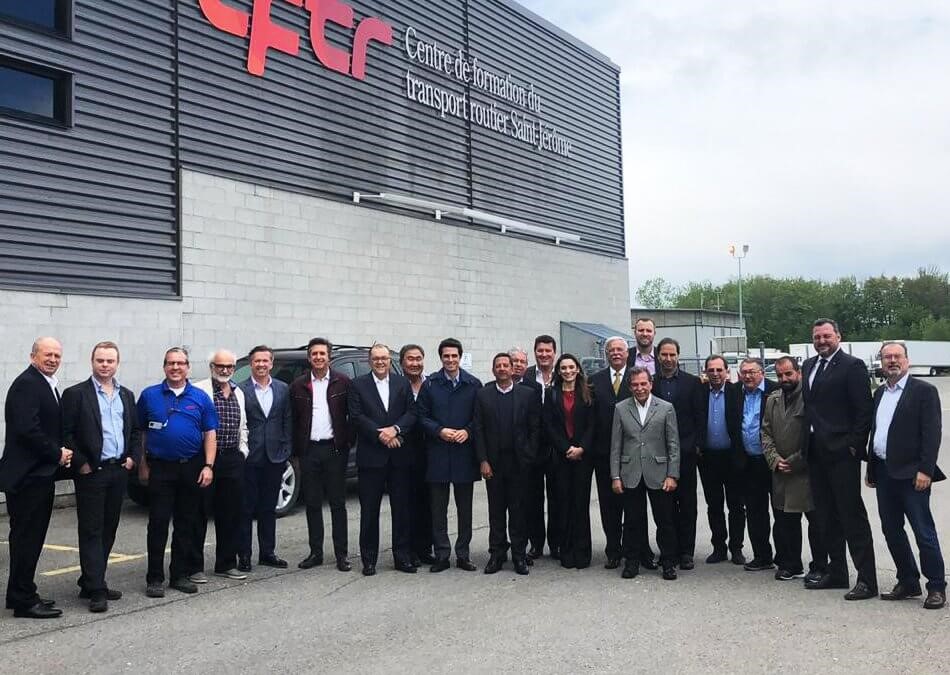Montreal, June 3rd 2019
As part of their assessment of the latest advances in the trucking industry worldwide, SETCESP sent delegates to Montreal to visit Canadian transport companies like Robert Transport and training providers like Virage Simulation and the CFTR. The CFTR and its sister school, the CFTC, deliver North America’s most comprehensive professional truck driver training and integrate Virage Simulation truck simulators into their programs. In Brazil, unlike in North America, there is no truck driver shortage. However, Brazilian truck companies are well aware of the critical role of truck driving training in reducing crashes, improving fuel economy, and updating drivers on new vehicle technologies.
During their visit, Dr Pierro Hirsch, Director of Research at Virage Simulation, gave a presentation on changes in Entry-Level Driver Training (ELDT) for the commercial driver’s license (CDL) in Canada and the USA that will be implemented in 2020. The Canadian Federal government, in part as a response to the tragic Humboldt Broncos bus-truck crash in Saskatchewan, plans to implement a standard program of minimum hours of truck driver training for provinces to adopt. In the USA, the Federal Motor Carrier Safety Administration (FMCSA) that regulates the US trucking industry plans to implement the ELDT Final Rule published in December 2016 - FMCSA-2007-27748. Unlike Canada, the new FMCSA ruling does not require a minimum number of training hours. Instead, the new rules require proficiency-based CDL training with the expectation that all CDL schools will train and test their drivers to the desired levels of skill proficiency. Proficiency tests require drivers to consistently perform a driving task over several consecutive trials at or above the benchmark criterion, e.g. error rates, group norms etc. This is a higher standard than the previous one of competence, that only required CDL candidates to perform a driving task at least once, but not consistently. During their visit to the CFTR, the SETCESP delegates were also given a demonstration of the VS600M driving simulator and proficiency-based training programs that help determine objective driver performance benchmarks and measure driving proficiency. Dr Hirsch explained that driving simulator-based training also reduces training costs, increases comprehensiveness and consistency of training, introduces new vehicle technologies, improves transfer of training, and are ideal for communicating and reinforcing a company’s safety culture values.
Virage Simulation was honored to be invited to demonstrate its training technology and looks forward to more opportunities with Brazilian companies.


Link to SETCESP website (Portuguese).
